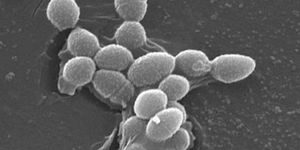A Totally New Look at the Cell's Powerhouse
Life needs energy, and tiny machines in every cell called mitochondria act like miniature powerhouses, converting molecules from food into energy our body can burn. Scientists at The University of Western Australia and Harry Perkins Institute of Medical Research have learned more about the atomic structure of the mitochondria, and have gained new insight into how it functions. This work could help create therapeutics for treating mitochondrial dysfunction.
These cellular organelles are special, and the endosymbiotic hypothesis suggests that they were originally a symbiotic bacterium, which eventually became an essential part of the cell. They carry their own DNA to make their own proteins and incredibly, it was recently found that they also have their own protein factories, called mitochondrial ribosomes or mitoribosomes.
"Mitochondria contain a set of genes that are used to make key protein building blocks that enable mitochondria to produce energy," said Associate Professor Aleksandra Filipovska, Head of Mitochondrial Medicine and Biology at UWA's School of Molecular Sciences and Harry Perkins Institute of Medical Research.
“These proteins are essential for energy production however little is known about how they are made. The recent discovery of the atomic structure of the machine that makes these proteins (the mitoribosome) has revealed how they are made.
“Surprisingly, this machine blocks itself from making the proteins until it is precisely located where these proteins are required within mitochondria,” explained Filipovska. “This is highly unusual and previously not found in nature."
This work has shown how cutting-edge technology is helping us learn more about the ability of biological systems to adjust to different energy requirements, said Filipovska. Mitochondrial dysfunction has been implicated in many different processes as well, opening up new therapeutic options for the resulting disorders.
"Defects in mitochondrial function underlie many common diseases such as neurodegenerative, metabolic and heart diseases, cancer, diabetes, and aging," she added. "Therefore molecular discoveries provide the much-needed knowledge that enables us to make the leap to disease treatments and drug discoveries."
Next, the researchers want to learn how defects in the mitoribosome’s function can lead to disease. "We are now working on developing models of disease to study these defects. We are using our models to screen for drugs that can selectively rescue defects in protein synthesis and energy production,” concluded Filipovska.
Sources: Phys.org via The University of Western Australia, Nature








